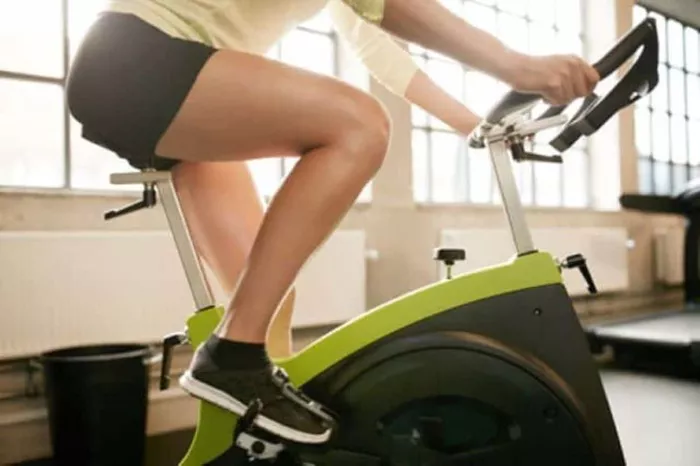Stationary biking is an excellent cardiovascular workout that can be performed in the comfort of your home or at a gym. It is low-impact, making it suitable for individuals of all fitness levels, from beginners to seasoned athletes. However, to maximize the benefits and minimize the risk of injury, it’s crucial to perform stationary bike exercises correctly. This article will guide you through the essential steps to ensure an effective and safe workout.
The Benefits of Stationary Biking
Before diving into the specifics of how to exercise correctly on a stationary bike, it’s important to understand the benefits this form of exercise offers:
Cardiovascular Health: Regular cycling improves heart health by increasing cardiovascular endurance.
Weight Management: Stationary biking can aid in weight loss and management by burning calories.
Muscle Toning: It strengthens and tones the lower body muscles, including quadriceps, hamstrings, calves, and glutes.
Low Impact: Unlike running or other high-impact exercises, stationary biking puts less stress on joints.
Convenience: You can easily incorporate it into your daily routine without needing to go outside.
Choosing the Right Bike
Selecting the appropriate stationary bike is the first step toward an effective workout. There are various types of stationary bikes available:
Upright Bikes: Mimic traditional cycling positions and are great for those looking for a more intense workout.
Recumbent Bikes: Offer back support and are easier on the joints, making them ideal for beginners or those with back issues.
Spin Bikes: Designed for high-intensity workouts; they typically have a heavier flywheel for a more realistic cycling experience.
When choosing a bike, consider factors such as comfort, adjustability, and features like built-in workouts or connectivity options.
Setting Up Your Stationary Bike
Proper setup is crucial for both comfort and performance. Follow these steps to adjust your bike correctly:
1. Adjusting Seat Height
The seat height is vital for proper leg extension during pedaling. Here’s how to adjust it:
Stand next to the bike and raise the seat until it aligns with your hip bone.
Sit on the bike and place your heel on the pedal at its lowest point (6 o’clock position). Your leg should be fully extended but not locked.
When you switch to your forefoot on the pedal, there should be a slight bend in your knee (approximately 25 to 35 degrees).
2. Positioning the Seat Forward/Backward
The seat’s horizontal position affects knee alignment:
Clip in or place your feet in the cages and bring your legs to 9 o’clock and 3 o’clock positions.
Ensure that your knee is directly above the pedal when at 3 o’clock. Adjust forward or backward as necessary.
3. Handlebar Adjustment
Handlebar height impacts posture during cycling:
The handlebars should be at a height that allows you to maintain a relaxed grip with slightly bent elbows.
A good starting point is at seat height; adjust higher if you find yourself rounding your back.
4. Check Your Posture
Proper posture while cycling prevents discomfort and injury:
Keep your back straight with shoulders relaxed.
Your core should be engaged throughout the workout.
Avoid leaning too far forward or backward; maintain a neutral spine.
Warming Up Before Cycling
A proper warm-up prepares your body for exercise and reduces injury risk. Follow these steps:
1. Start with 5 to 10 minutes of easy pedaling at low resistance.
2. Gradually increase resistance while maintaining a comfortable pace.
3. Incorporate dynamic stretches focusing on legs and hips.
Cycling Techniques for Effective Workouts
To maximize benefits from stationary biking, focus on these techniques:
1. Maintain Cadence
Cadence refers to how fast you pedal:
Aim for a cadence of 80 to 100 revolutions per minute (RPM) during steady-state rides.
For high-intensity intervals, aim for higher RPMs.
2. Use Resistance Wisely
Adjusting resistance changes workout intensity:
For endurance training, use moderate resistance while maintaining high cadence.
For strength training, increase resistance and lower cadence (60–80 RPM).
3. Incorporate Intervals
Interval training enhances cardiovascular fitness:
Alternate between high-intensity bursts (30 seconds) followed by low-intensity recovery (1–2 minutes).
This method improves endurance and calorie burn.
Monitoring Heart Rate
Keeping track of your heart rate ensures you’re exercising within your target zone:
1. Use a heart rate monitor or check manually by counting beats for 15 seconds and multiplying by four.
2. Aim for 50% to 85% of your maximum heart rate depending on fitness goals.
Cool Down After Cycling
Cooling down helps gradually lower heart rate and aids recovery:
1. Spend 5–10 minutes pedaling at low intensity.
2. Follow up with static stretching focusing on legs and lower back.
See Also: Anaerobic Exercise VS. Aerobic Exercise: What’s The Difference?
Common Mistakes to Avoid
To ensure safety and effectiveness while using a stationary bike, avoid these common mistakes:
1. Incorrect Setup
Not adjusting the bike properly can lead to discomfort or injury.
2. Poor Posture
Slouching or leaning too far forward can strain your back.
3. Overexertion
Pushing too hard without proper conditioning can lead to burnout or injury.
Conclusion
Stationary biking is an effective way to improve cardiovascular health, tone muscles, and manage weight when done correctly. By ensuring proper setup, employing effective cycling techniques, monitoring heart rate, and avoiding common mistakes, you can enjoy all the benefits this exercise offers while minimizing risks. Whether you’re new to cycling or looking to enhance your routine, following these guidelines will help you achieve your fitness goals safely and effectively.
Related Topics
How Good Is a Stationary Bike for Weight Loss?


































